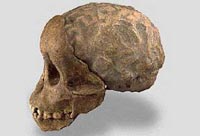American scientists examines collection of more than 100 Mexican mummies
American scientists are examining a collection of more than 100 mummies accidentally preserved in the last 150 years to unlock secrets of everyday life in a small Mexican silver mining town.

The bodies, believed to be the largest mummy collection in the Western hemisphere, were apparently mummified by oppressive heat while stored in above-ground crypts in Guanajuato, Mexico. They were found between about 1865 and the mid-1950s and now are part of a museum there.
"I think it's a wonderful opportunity," said Jerry Melbye, a professor and forensic anthropologist at Texas State University in San Marcos. "It brings us a picture of what life was like in the past, and I find that very interesting."
Scientists from Texas State and Quinnipiac University in Connecticut are examining the mummies. Preliminary findings were scheduled to be announced Thursday morning in Hartford.
"We're kind of looking to see if they'll tell us the story of the life and times of Guanajuato and its past," said Ronald Beckett, a cardiopulmonary sciences professor at Quinnipiac University and former co-host of "The Mummy Road Show" on the National Geographic Channel.
Researchers are not sure how old the mummies were when they died, but they believe they were common folk who passed away between 1850 and the 1950s.
Subscribe to Pravda.Ru Telegram channel, Facebook, RSS!


